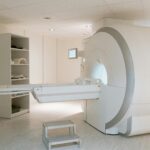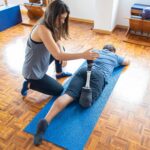April is the month to celebrate Autism Awareness, but a big part of raising awareness is taking what you’ve learned into your everyday life. Much of this movement focuses on spreading the medical facts of autism while the world’s focus is dedicated to movement. While that is incredibly important, due to the fact that the information is constantly changing with medical advancement, it is just as important to look into the social aspect of Autism Awareness.
Autism Speaks, Autism Society, the United Nations, and many other groups have made major strides in recent years for regular social awareness, acceptance, and inclusion. The idea of activism groups everywhere has been to introduce the facts and realities of life along the spectrum of autism into daily life and conversation. By opening the space for conversation, we take away the stigma of discussing disabilities and give people a way to educate and be educated in a non-hostile and familiar environment.
Inclusivity is something that we are constantly striving to be better about, but long-practiced exclusion and social beliefs often prevail. We each perform actions every day that might be ingrained in us, from either experience or mirroring, but that does not inherently mean that these are acceptable actions. While they might not physically hurt or exclude others, our words and practices can make the world hostile to other people.
2020 had many of us changing our workplace and health care locations to home. While that means less direct interactions, it does not mean that we should slow on efforts to create an inclusive environment. There are many actions we can incorporate to our day-to-day lives to make our world more inclusive, whether it’s April or not. Take a look at some of the actions we have listed below to help make your school, workplace, or practice more inclusive to all, including people at every level of the Autism Spectrum.
Work
The Employer Assistance and Resource Network on Disability Inclusion (EARN) is a leading force in advancing workforce diversity. Their 7-Step Framework for Building a Disability-Inclusive Organization is clear cut and easy to add to an existing workforce:
- Lead the Way: Commit to creating and maintaining a diverse and inclusive work environment in any and every level of an organization. While the idea here focuses largely on leaderships guiding the way through their choice, make sure to actively include other members of the organization to open natural communication and understanding into the choices that are being made.
- Build the Pipeline: reaching out with the express desire of recruiting candidates with disabilities will open up a world of untapped potential. Networking groups, college/program-specific recruiting and internship groups, and career fairs are great places to start!
- Hire and Keep the Best: Now that you’ve created a pipeline of candidates with disabilities who are interested in working with you, you now have to give them a reason to stay. It’s unfair and certainly not inclusive to expect people to dedicate time and efforts to a company that will not return the efforts. To keep the best and brightest, you need to give them a comfortable environment with proper accommodations and opportunities for career development.
- Ensure Productivity: Employees provide their highest quality work when they have no additional distractions or worries. To ensure productivity, make sure to accommodate employees with disabilities. According to the Job Accommodation Network (JAN), more than half of all workplace accommodations cost nothing and most employers end up reporting lower costs of insurance and training with their increased productivity.
- Communicate: In every workplace, communication is key. If you want to attract and retain talented individuals with disabilities, making your stance on inclusivity clear is incredibly important. Creating visible and public efforts to support an inclusive and diverse work environment is a clear way to let interested candidates know that they are welcome as they are. This effort needs to be extended in-house as well. Keep your internal employees educated and aware of the company’s policies and ideals will go a long way to keeping a healthy environment.
- Be Tech Savvy: The push towards widespread usage of communication technology and accessible information hit an all-time high milestone during COVID. Now, there are more programs than ever to use to help with long-distance communication, but this effort goes beyond that. For people with sensory disabilities, be it seeing, hearing, or some combination of sensory effects, things like subtitles on presentations and sending the information directly to employees after a meeting can be the difference between a productive and gifted employee and one that does not seem to meet their full potential.
- Measure Success: You’ve found the best and brightest, gave them a healthy workplace environment where they can thrive, so all that is left to do is ensure accountability and continuous improvement. Employees with disabilities need to know that the company they were told to join was going through more than a phase when they started to become inclusive and accepting. It needs to be an active effort, both internally and externally, so keep progressing as a company and a culture.
Healthcare
The Boston Medical Center (BMC), with the help of the Association of University Centers on Disabilities (AUCD) started the process of creating an autism friendly hospital in 2017. The idea started with the acknowledgement that “children with ASD [Autism Spectrum Disorder] experience more inpatient and outpatient visits than their neurotypical peers“. Creating a place that addressed the unique needs that people with ASD face was a challenge that had not yet been bested.
The AUCD created a visual representation of sensory and communication barriers that patients with ASD experience in hospital settings. The same clinical set-up that comforts many neurotypical people can make much-needed hospital trips and treatments difficult for the patient, caregiver, and provider.
With this in mind, BMC created the Autism Friendly Initiative (AFI). The AFI focused on creating a hospital in which people on the Autism spectrum could get proper and complete care in a comforting environment. The initiative focused on four key domains that could be implemented in nearly any setting:
- Individual patient care
- Modifying/Minimalizing sensory environmental triggers
- Training providers, staff, and students to properly care for ASD
- Proving support in the preparation of visits
There are simple concepts and not hard for a motivated team of professionals to implement. It may not be the fastest or most thrilling movement. Still, the long-term comfort of properly educated caregivers and comfortable ASD patients will likely mean a better quality of care provided on both ends.
One of the most significant parts of this initiative is that everything being introduced here is easy to implement with minor changes. Take the time to start an open dialogue with friends, coworkers, family, and patients about the things you all can do to create a more accepting and inclusive world.
If you are looking for roles where you can help establish these standards in healthcare settings, check out our leadership and management job opportunities. If you are interested in a role, apply directly or send us your resume and we’ll help you find your perfect position.











